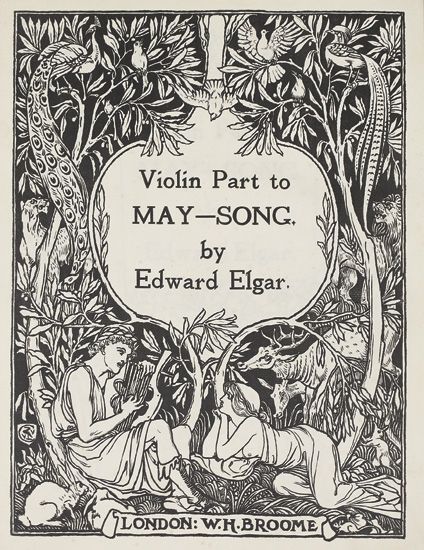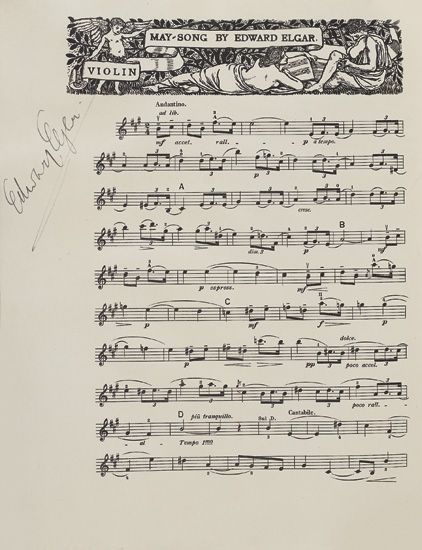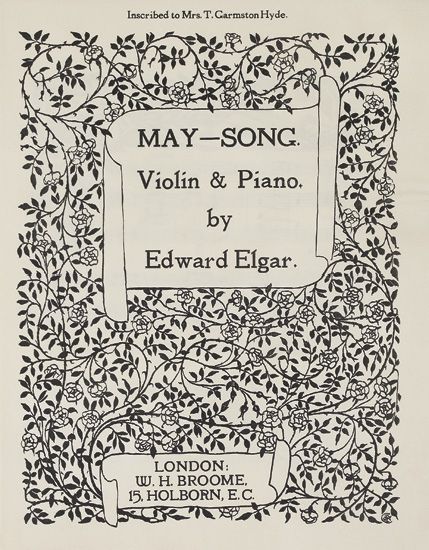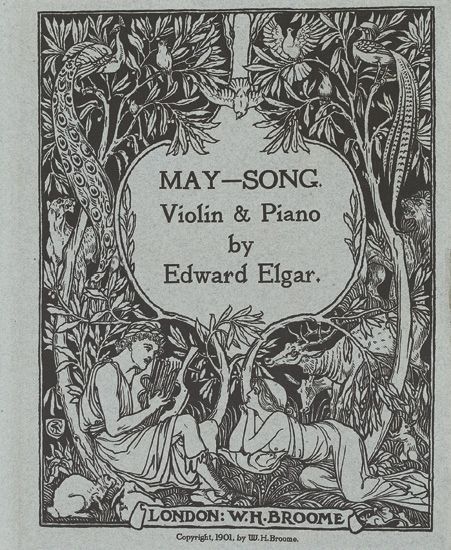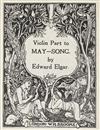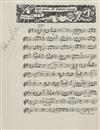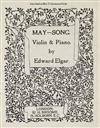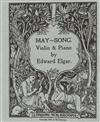Sale 2289 - Lot 94
Unsold
Estimate: $ 7,000 - $ 10,000
RARE WORK BY CRANE, SIGNED BY ELGAR (CRANE, WALTER.) Elgar, Sir Edward. May Song. Violin and Piano * Piano Solo. Illustrated sheet music. 3 fascicles: Violin and Piano * Piano Solo * Violin Part to May-Song. Each with woodcut designs on covers, borders, and vignettes by Crane, engraved by R. B. Lodge. Each folio, roughly 12 pages, folded folio sheets loose as issued in three blue decorated paper wrappers; laid into two sand-colored linen folders with printed labels and salmon colored silk ties, tie broken at spine on Piano Solo folder, some toning to covers, light on Violin and Piano cover, heaviest on other two. The first two fascicles inscribed to Mrs. T. Garmston Hyde on title-page. London: W. H. Broome at the Old Bourne Press, (1901)
Additional Details
advance proof copy of a rare example of deluxe music printing on vellum, printed at the press of william morris. signed by sir edgar elgar on all volumes. One of approximately 10 copies on vellum containing an extra vellum bi-folium with a large woodcut by Crane depicting Orpheus playing his lyre for Euridyce in a woodland clearing, surrounded by animals drawn to his music. Unnumbered, likely a dedication or presentation set. OCLC records four copies; only two (Yale and Harvard) on vellum but neither contain the extra vellum sheet with the woodcut.
May-Song was a lesser-known chamber work by Elgar. It was commissioned by William Broome as the first in a projected series of luxury publications of music. While Elgar acknowledged their beauty, he was not entirely on board and urged Broome in several letters to produce inexpensive editions of sheet music. As he feared, this production was unsuccessful and the piece was only recorded in the piano version and an orchestration in 1928; the piano and violin parts were never recorded. Hirsch IV, 1438. See also McVeagh, Diana, Elgar the Music Maker, Rochester, 2007, pages 88-89.
For three decades, Crane was very active in the Art Workers' Guild, and to the Arts and Crafts Exhibition Society, founded by him in 1888. One of his first collaborations with William Morris, his friend and fellow Socialist, was in 1894 when Crane created the decorations in The Story of the Glittering Plain, published at the Kelmscott press. Much of Crane's work centered around illustration for printed music (The Baby's Opera, A Song for May, Songs for the Nursery, etc.) and this work for Elgar's ode to Spring was a natural progression.
May-Song was a lesser-known chamber work by Elgar. It was commissioned by William Broome as the first in a projected series of luxury publications of music. While Elgar acknowledged their beauty, he was not entirely on board and urged Broome in several letters to produce inexpensive editions of sheet music. As he feared, this production was unsuccessful and the piece was only recorded in the piano version and an orchestration in 1928; the piano and violin parts were never recorded. Hirsch IV, 1438. See also McVeagh, Diana, Elgar the Music Maker, Rochester, 2007, pages 88-89.
For three decades, Crane was very active in the Art Workers' Guild, and to the Arts and Crafts Exhibition Society, founded by him in 1888. One of his first collaborations with William Morris, his friend and fellow Socialist, was in 1894 when Crane created the decorations in The Story of the Glittering Plain, published at the Kelmscott press. Much of Crane's work centered around illustration for printed music (The Baby's Opera, A Song for May, Songs for the Nursery, etc.) and this work for Elgar's ode to Spring was a natural progression.
Exhibition Hours
Exhibition Hours
Aliquam vulputate ornare congue. Vestibulum maximus, libero in placerat faucibus, risus nisl molestie massa, ut maximus metus lectus vel lorem.



